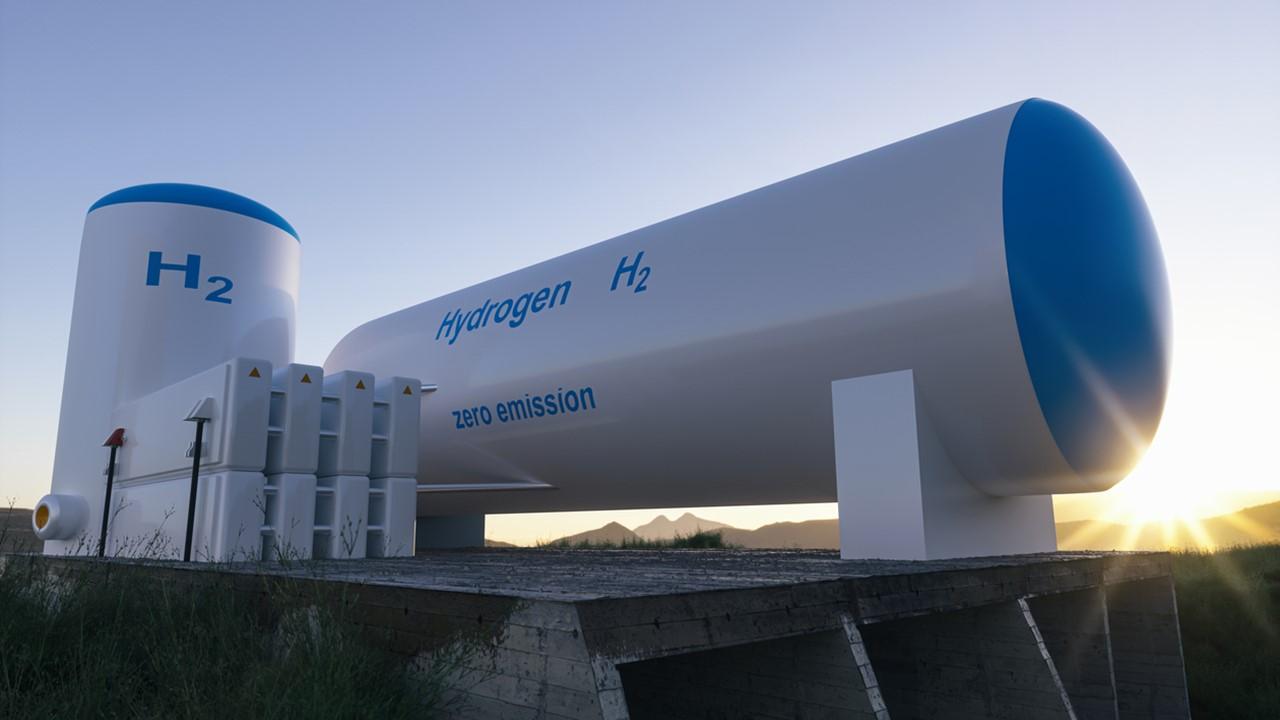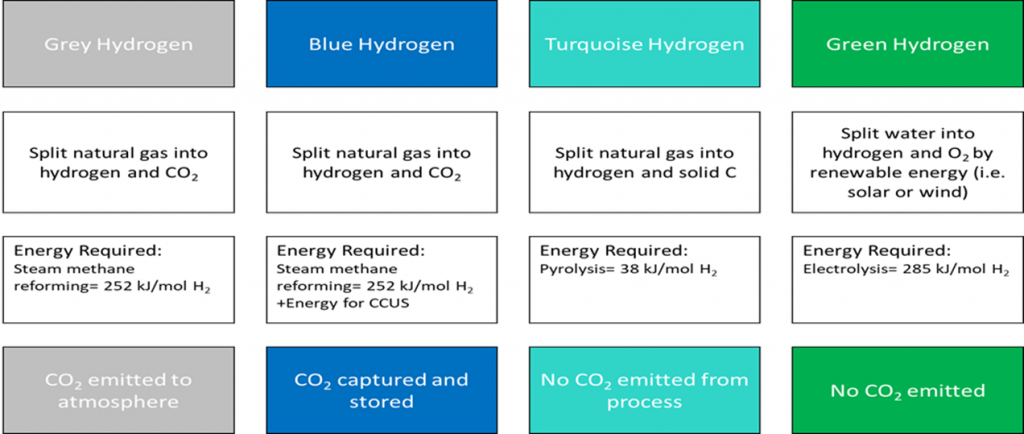
Hydrogen is an important energy source for the Energy Transition since its combustion produces only water – but the production process needs to be considered. Popular terms for the method of production involve the colours Grey, Blue, Turquoise, and Green:

Hydrogen can be produced from natural gas in a process called “Grey Hydrogen” which involves thermal processes such as steam-methane reformation or electrolysis powered by gas-fired power generation. These methods of production have been used commonly, but CO2 is produced in this process, so some improvements are necessary.
To be classified as “Blue Hydrogen” the CO2 needs to be captured, stored, and reinjected downhole (sequestered). Some industry participants believe that Blue Hydrogen is the key to building scale and lowering costs in Hydrogen transport and distribution, which will enable an earlier transition to renewable green Hydrogen, produced through electrolysis of water, powered by renewables. They believe the earlier we can shift, the faster we can reduce emissions.
Another type of low-carbon Hydrogen produced from natural gas is called “Turquoise Hydrogen” and it involves pyrolysis which is a family of technologies being scaled up now. One such production route to Hydrogen is “catalytic thermal decomposition” where natural gas is heated up in a vertical reactor to high temperatures in order to generate Hydrogen whilst valuable nanostructured carbon black particles are simultaneously produced. Other pyrolysis production routes include “thermal and non-thermal plasma”, “thermal non-catalytic”, and “liquid metal” (passing methane through a bubble column reactor of molten liquid metal (>1000°C)). In all pyrolysis production routes there are no CO2 emissions associated with the processes. The carbon intensity of these process is dependent on the details of methane production and the source of energy for the reactors. But because energy potential is released from the four Hydrogen atoms (e.g. CH4) during processing, much less energy is required than splitting water (H2O) during electrolysis (since its Hydrogen atoms are already oxidized). This means pyrolysis is a very energy efficient means to produce Hydrogen.
“Green Hydrogen” is the production of Hydrogen through electrolysis powered by renewables power generation (i.e. Solar, Wind, or Geothermal) – this is the most popular and environmentally compliant current manifestation of Hydrogen today. Some electrolysis technologies need purified water, but other technologies using seawater are advancing rapidly, as well as more efficient catalytic technologies for the electrodes.



